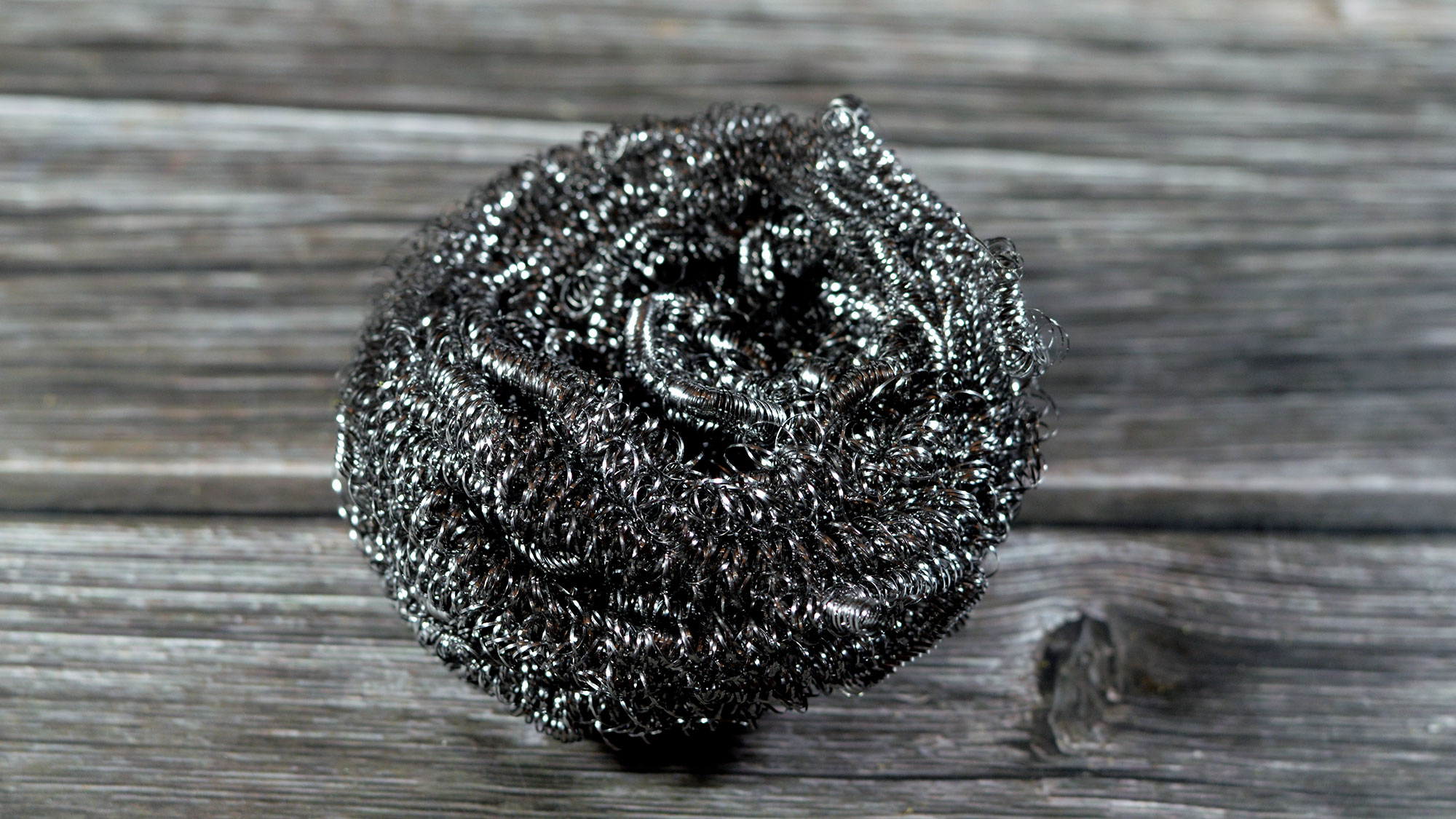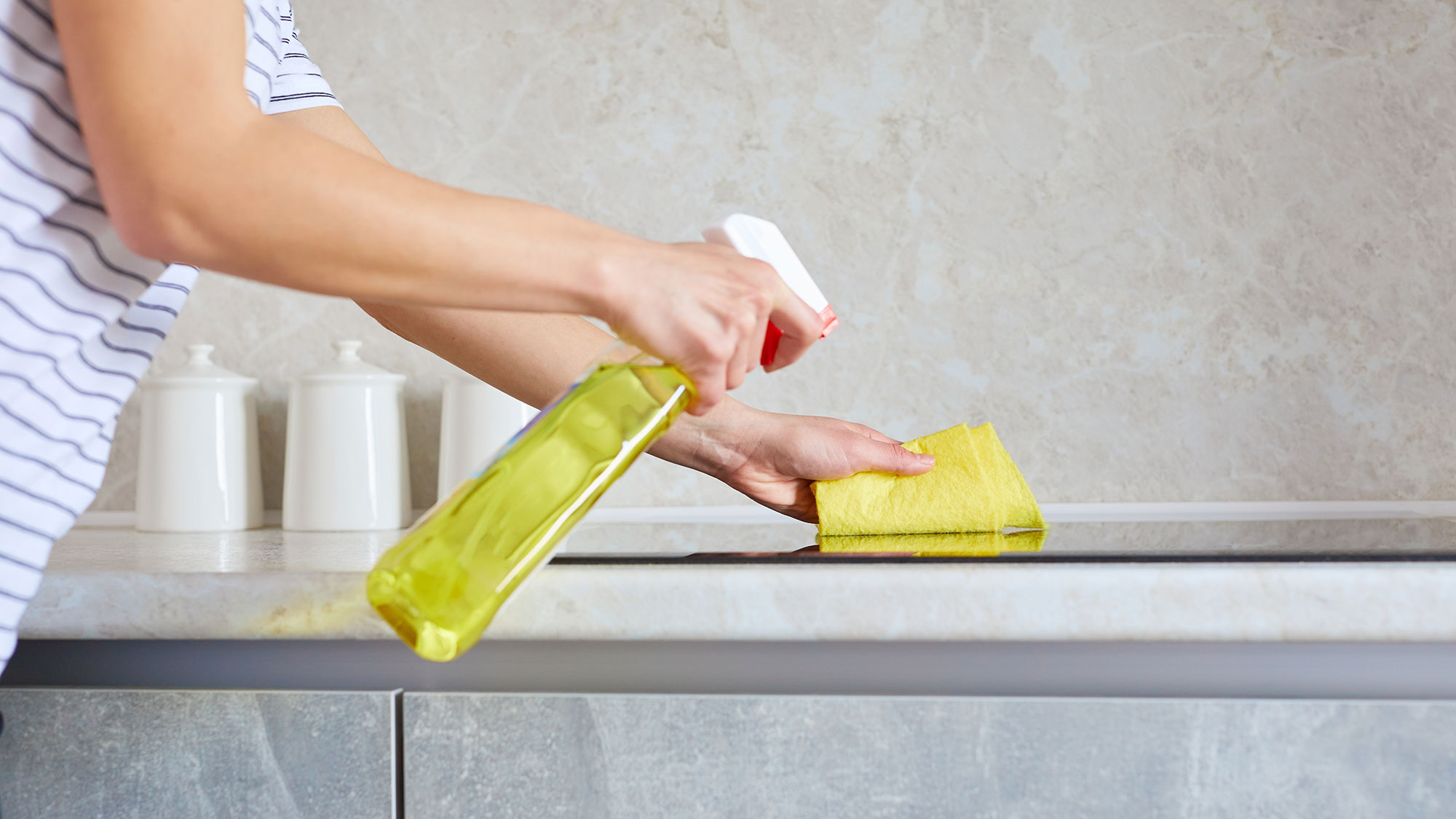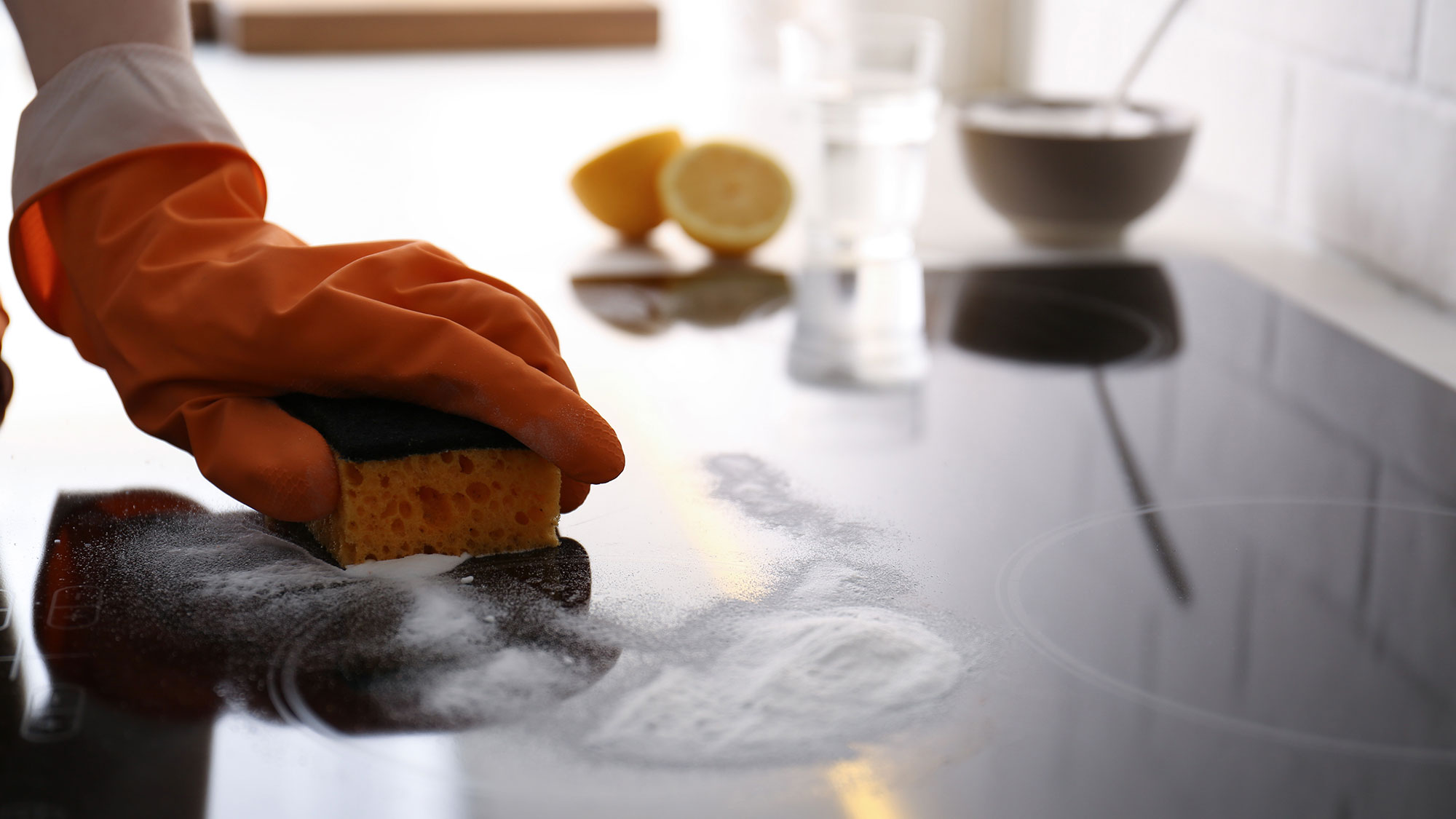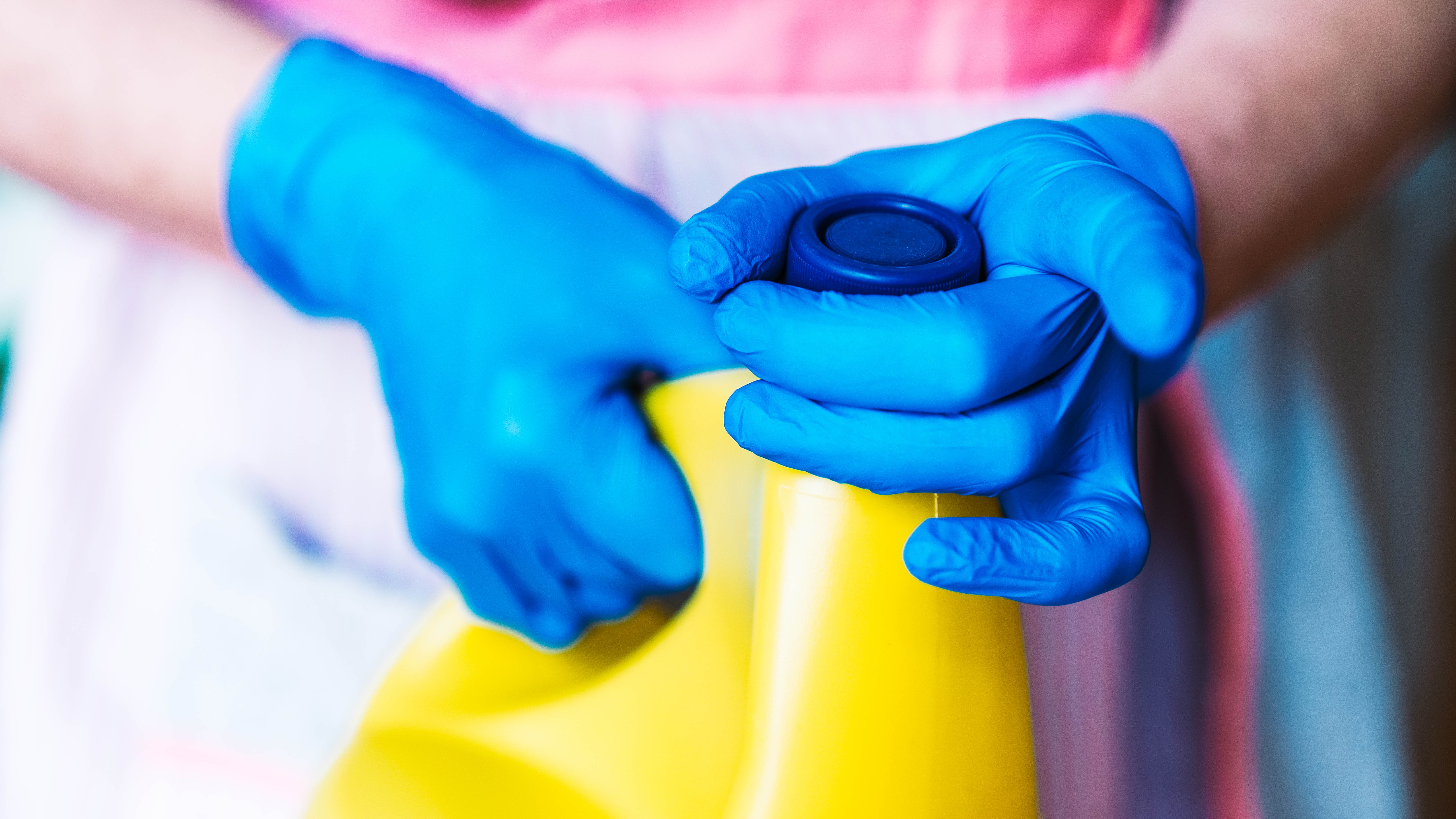5 things you should never use to clean an induction cooktop
Keep your induction cooktop damage free

The advantage of using an induction cooktop over one of the best gas ranges, is that it’s far easier to keep clean. Without the need to clean around the burners and pan supports, cleaning an induction cooktop is much less fiddly and will leave you more time to get on with what you enjoy.
However, although ceramic glass cooktops add a sleek aesthetic to the kitchen, they do need to be cleaned in the right way to keep them looking like new. So, if you notice white marks or scratches on your induction cooktop, you could be using the wrong cleaning supplies.
To prevent damaging your induction cooktop and leaving behind unsightly marks that won’t budge, we’ve listed 5 items you should avoid using when cleaning up cooking spills to keep your cooktop looking pristine.
1. Brushes with steel bristles

Cleaning tools with steel bristles, including wire wool, should never be used to clean an induction cooktop. Steel is far too abrasive and will leave behind deep pits in the surface of the cooktop. When using such cleaning tools it’s also tempting to apply a lot of pressure, which can increase the risk of even deeper scratches.
The knock-on effect of food residue becoming lodged in the scratches causes another issue, with even more mess to clean up. As an alternative to using harsh brushes and wire wool, opt for microfiber clothes, such as Amazon Basic's bundle of non-abrasive and reuseable microfiber cleaning cloths ($9 at Amazon).
2. Ammonia

Since induction cooktops are made of glass, it might seem sensible to reach for a glass cleaner. However, glass cleaners include ammonia, which is too strong to use on an induction cooktop. Rather than leaving you with a sparkling sheen, ammonia can leave behind permanent stains and streaking.
Apart from damaging your induction cooktop, ammonia can also damage your health, especially if you have a condition such as asthma. The fumes can cause coughing and irritate your nose and throat.
Sign up to get the BEST of Tom's Guide direct to your inbox.
Get instant access to breaking news, the hottest reviews, great deals and helpful tips.
So, rather than reaching for the glass cleaner, use a product specifically designed to clean induction cooktops.
Weiman Cooktop and Stove Top Cleaner Kit: $19.98 @ Amazon
This complete cleaning kit comes with a scraper, reusable scrub pad holder and Weiman's streak-free, non-abrasive glass cooktop cleaner. With an average rating of 4.6 stars out of nearly 80,000 reviews on Amazon, it's a customer favorite.
3. Rust removers
If you’ve transferred rust onto your cooktop from the bottom of a pan, don’t be tempted to clean the cooktop’s surface with a rust remover. Rust removers work by breaking down iron oxide through a chemical reaction, which makes it easy to wipe away the debris. However, they are designed to work on ferrous metals that contain iron, such as steel, cast iron, and wrought iron, and they shouldn’t be used on glass.
To avoid the problem, make sure your pans are rust-free before placing them on your cooktop.
4. Abrasive powder cleaners

Check the contents of any off-the-shelf cleaner before applying it to your induction cooktop. Powder cleaners are too abrasive and should be avoided. Their gritty texture might work away the dirt, but it will also scratch the surface of your induction cooktop, similar to using a brush with steel bristles or wire wool.
Once your cooktop is scratched, food residue will become trapped inside the crevices, making it appear dirty and stained and harder to clean in the future.
Abrasive cleaning powders are also one of the products to avoid when cleaning your bathtub. Just like with induction cooktops, they can scratch the surface and cause more harm than good.
5. Chlorine bleach

Caution should always be taken when using bleach, but even more so when cleaning an induction cooktop, as it’s one of the things you should never clean with bleach. Bleach, like ammonia, is far too harsh and will leave behind an unsightly trail of white marks.
Instead, leave bleach for the laundry to make your whites whiter or for disinfecting areas in the bathroom.
More from Tom's Guide

Camilla Sharman has worked in publishing and marketing for over 30 years and has covered a wide range of sectors within the business and consumer industries both as a feature, content, and freelance writer.
As a business journalist, Camilla has researched articles for many different sectors from the jewellery industry to finance and tech, charities, and the arts. Whatever she’s covered, she enjoys delving deep and learning the ins and out of different topics, then conveying her research within engaging content that informs the reader. In her spare time, when she’s not in her kitchen experimenting with a new recipe, you’ll find her keeping fit at the gym. In the pool, stretching at a yoga class, or on a spin bike, exercise is her escape time. She also loves the great outdoors and if she’s not pottering about in her garden, she’ll be jumping on her bike for a gentle cycle ride.

